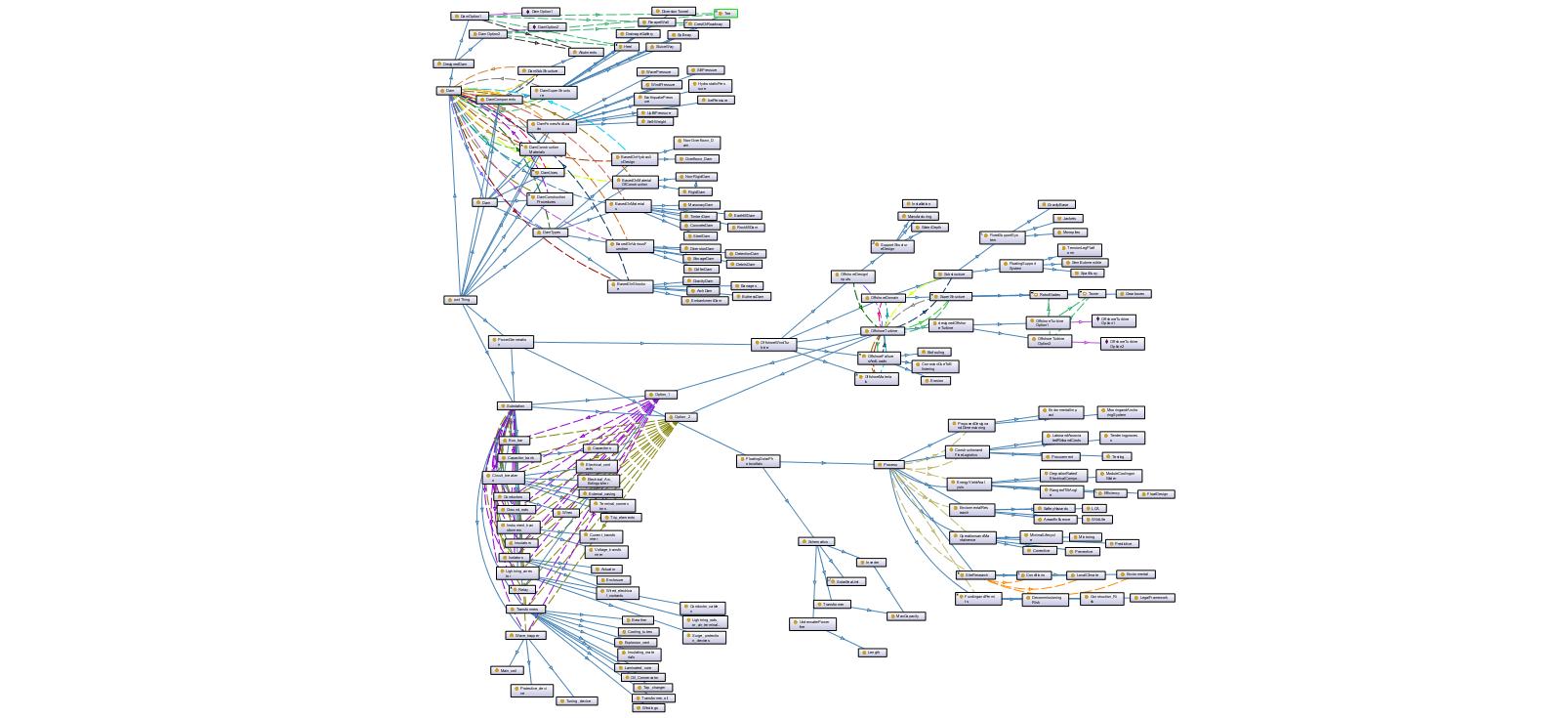Model
Figure 1 Preview of Ontology
Please download.OWL file at bottom of this page for detailed view.
What is the purpose?
The objective of this model is to provide a common ground framework for integrating civil engineering products developed and modeled to different scales and in different contexts. To this end, designers and engineers can understand relationships, functions, and interfaces to see how these products could potentially co-exist. Furthermore, it is an effective, logical, and transparent method to share knowledge and present information amongst team members.
What is the scope?
This model naturally contains all four individual civil engineering projects, which in return has all of the most essential parts of the systems if they were observed individually. In order to improve the model, we had to work to develop how the products interact with each other, and their relationship with each other led to new information in the model. The model needs to make it understandable how the individual products interact and rely on each other in the integration environment without navigation. For example, you could understand through the model alone that the off-wind turbine, floating solar are feeding electricity to the substation through the ontology model alone, or you would understand the dam protects the water level for the mooring line getting too high.
Who are the intended users?
The intended users for the integrated ontology are primarily designers and anyone working in the project to create a working knowledge base for all of the functions and elements of such a complex project. However, this information could also be highly relevant for let’s say stakeholders or politicians, or investors to quickly understand and overview all of the complex interworking of the integrated system. This model also allows for more interdisciplinary cooperation and the exchange of experts with experts in other fields to understand the aspects of the project and how subfunctions interact with each other. Finally, the same ontology for an integrated system like this can be reused and knowledge transferred to other projects, or researchers interested in doing a similar project, and to have more than a starting point.
What is intended use?
In this project, individual ontology models were used for team members to quickly understand the working of complex products and systems from other members, and help to find a way to integrate the individual product into a specific context in a specific environment. Subsequently, the integrated ontology model works in the same way, and can effectively communicate the most essential parts of the integrated system in the same way for a third party. Furthermore, relationships between the individual system are identified, as well as maintain the knowledge covered in the individual ontologies.
In situ, this could prove to be an invaluable tool for designers and stakeholders to share information and also to manage the deployment and development of complex civil engineering projects and products. Even amongst the individual systems, many complex subfunctions and subsystems were identified, designers and problem solvers could work to improve ontology in smaller stages, and the ontology model provides an interface for scaling and observing and integrating again later as proven in this success of this project.
